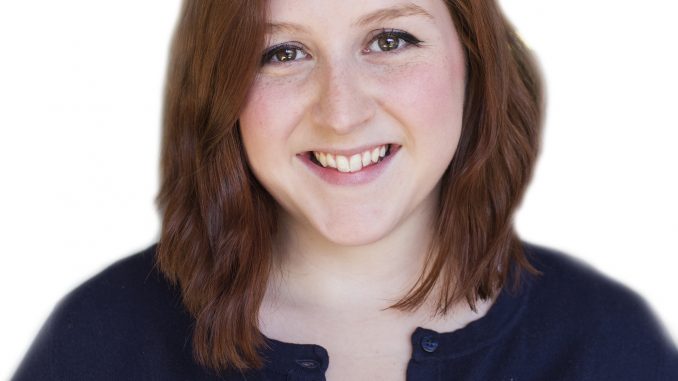
 Life today doesn’t seem too different than in 1938.
Life today doesn’t seem too different than in 1938.
I found this to be true sitting cross-legged on the floor of the time portal that is the archive room in The Temple News’ office. Scanning the pages for links to what is happening this week is a challenge but also one of the coolest parts of my job.
The red-bound book documenting the 1938 “Temple University News” hosts yellowed pages with flaky edges and tiny print.
That May, Jesse Rosen, a “black-eyed, brunette, petite,” senior who served on student council was asked about her plans for marriage, favorite weekend activities and was noted for loving “pastel colored dresses.”
The men profiled were asked about their extracurriculars and future professional plans.
I can’t help but think about Cecily Strong telling the various media outlets at last month’s White House Correspondents’ Dinner to “solemnly swear not to talk about Hillary’s appearance,” during her presidential campaign, “because that is not journalism.” Strong’s pleas to the media, while part of her comedic routine, feel like they belong in the crumbling pages of that 1938 publication.
A few months ago, I talked to Carolyn Kitch, a journalism professor who took over the department as chair this semester. In a time when so many people are obsessed with predicting a successful future for journalism, she dedicates her research and teaching to the history of journalism.
“Isn’t that tricky?” I asked her.
She explained that there is so much to learn from the way mediums have adapted and what has happened to those that have not.
“One of my favorite parts of old journalism is realizing how familiar it seems,” she said.
She explained that our understanding about events that we were not in attendance for, but play huge roles in our lives – like the civil rights movement – come from journalism. We have the images of the Edmund Pettus Bridge being crossed and police hosing down protesters and iconic speeches ingrained into our heads because journalists were there to capture those moments.
“We take those images for granted,” Kitch said. “We think, ‘Oh, they’re just in our minds’ – no, they were in the news.”
I returned from the interview and sat in the archives for hours. There’s a lot to learn from the 83 years that are documented in that room.
The oldest edition we have on file, 1932, is missing the back cover to its book and is so torn and disheveled I can barely make out a headline.
Years following are in better condition, especially in 1967 when we started storing the print copies in rows and rows of filing cabinets. The style of the masthead and even the name “Temple University News” has changed, but there are similarities scattered through the years.
It is hard not to notice some parallels between these old editions and in my own two years here. I can match last week’s demonstration, “Philadelphia is Baltimore,” with hundreds of stories of marches, sit-ins and protests participated in by students and Philadelphians alike.
Fifty years ago, in March of 1965, Dr. Martin Luther King Jr. led a march that would be later known as “Bloody Sunday.” For the last nine months, the chant “Black lives matter” has narrated much of the media cycle.
Sometimes I get a little selfish in my searching.
The year my grandparents got married, the university was handling issues following desegregation at an elementary school in Little Rock, Arkansas. When my parents were born, draft tests were sent out to students in efforts to get them to join the war. The day I was born the food trucks at “The Wall” became permanent fixtures made of concrete and decked out in cherry and white.
Not everything is the same, though.
I’ve flipped through papers with advertisements for the day care that once existed on Main Campus to accomodate those students already married with children. Jewelers tried to sell the idea of “the one” and the ring to adorn them with, in between news articles and feature stories.
More and more students came to the university. The size of Main Campus and the space around it expanded. Students filed into hundred-year old houses while the campus buildings grew upward and dorms became delegated to freshmen.
In 1987, West Columbia Avenue was changed to Cecil B. Moore Avenue to honor the late civil rights attorney that helped shape the community, and the university expanded south to meet it.
I do sometimes sit in my classes and wonder how my job as a journalist will differ from those who wrote for this paper in the 94 years that it has existed. Kitch assured me in our conversation that the need for journalism will not go away. Telling stories and representing communities has always and will always be the goal of newspapers – no matter what form they may take.
As I stress about being halfway done with my college career and producing the last issue of my first year as an editor for this publication, I take comfort in knowing that there are people that care so much about the many, many issues ahead.
The proof is in the tiny print and red-bounded books with flaky pages.
Paige Gross can be reached at paige.gross1@temple.edu or on Twitter @By_paigegross.


Be the first to comment